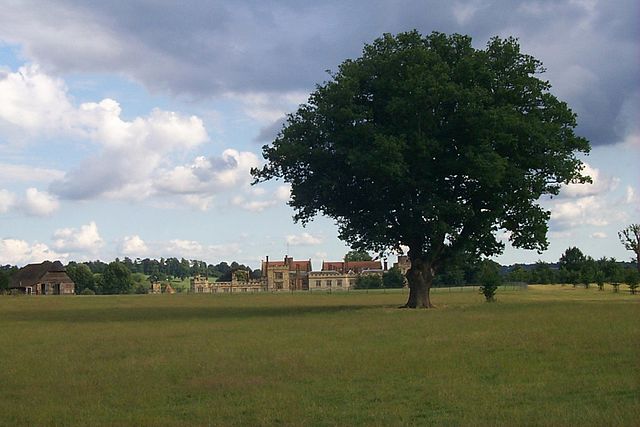Three hundred years ago, on 4 June 1719, the well-known diary of Thomas Marchant reports that he had attended ‘a cricket match at ye Sandfield’, near Hurstpierpoint. From about this date, documentary references to cricket in Sussex become an annual occurrence.
Two hundred and ninety years ago, in August 1729, ‘a great Cricket Match was play’d at Penshurst Park’ in Kent for 100 guineas a side ‘attended by thousands of spectators’. It was an eleven-a-side game between Kent, captained by Edward Steed, and a side led by Sir William Gage of West Firle, representing Sussex, Surrey and Hampshire. The latter side won.

One hundred and eighty years ago, in 1839, arising from the efforts of twenty-one-year-old George Langdon, the Sussex Cricket Club was formed, taking over from cricket ‘funds’ which had previously organised matches in the county’s name. During the season, five fixtures were played and lost, two against Kent, two against MCC, and one against England, home games being played at the Royal Ground in Brighton, roughly where The Level is now. Langdon’s club was a forerunner of the later Sussex County Cricket Club.
Also in 1839, the first first-class fixture was staged at the Montpelier Ground in Brighton, between the Gentlemen of Sussex and MCC. and won by the local side, The ground was run by William Lillywhite: it closed in 1844 and Montpelier Crescent built over it.
In 1879, one hundred and forty years ago, the third Earl of Sheffield, then 47, started his ‘run’ of eighteen years as the Sussex Club president. Though he could be difficult and capricious there is little doubt that his financial support for the Club enabled it to survive difficult times in the 1880s and early 1890s. His private ground, Sheffield Park near Fletching, staged nine first-class matches between 1881 and 1896.
One hundred and twenty years ago, on 7 June 1899, Cyril Bland took all ten of Kent’s second-innings wickets for Sussex at the Angel Ground, Tonbridge, one of only two instances of ‘all-ten’ for the county’s full side. His full analysis read 25.2-9-48-10.
One hundred years ago, in 1919, the club restarted playing operations after the depredations of the Great War. In the Championship, contested by fifteen counties, the club agreed twenty fixtures of two days but then found difficulty in raising sides because several professionals were not demobilised until mid-season. Sussex fielded thirty-six players in these games, more than in any season before or since. In the first match, at Taunton on 22 May, the side included Harold Heygate, aged 45 and suffering from rheumatism, who took so long to reach the wicket in the second innings that he was ‘timed out’ by umpire Alfred Street on an appeal by Len Braund, thus producing a tie result, and generating much controversy.
Also in 1919, the match against Kent at Tonbridge in June was completed in 128.1 overs in a single day’s day with Sussex dismissed for 60 and 78, one of only two such Sussex outcomes in the official Championship.
Ninety years ago in May 1929, Andy Ducat, playing for Surrey against Sussex at The Oval, scored nine runs off a single delivery from Jim Parks senior, five all-run plus four overthrows, one of only four such instances in the ‘official’ Championship.
Eighty years ago, at Kettering in July 1939, Sussex were set 428 to win in 310 minutes by Northamptonshire and reached the total for the loss only five wickets with 25 minutes to spare. Until 1999 this was the highest winning fourth-innings total achieved by the county. George Cox junior hit 232.
In 1949, seventy years ago, John Langridge, aged 39, scored 2,850 runs in first-class matches for Sussex in the season, the most such runs for the county, inching ahead of the 2,847 scored by Jim Parks senior in 1937.He scored 12 centuries, including four consecutively, the most by a batsman in a season for Sussex. Wisden selected him in 1950 as one its five Cricketers of the Year.
Sixty years ago, in 1959, the Sussex Second Eleven, along with sides from the sixteen other first-class counties, joined the then new County Second Eleven Championship. Under the captaincy of Roy Kingsford, Sussex won five of their twelve two-day matches in the competition, finishing sixth in the table. The club has since won this competition three times, in 1978, 1990 and 2007.
In 1969, fifty years ago, Sussex, like the other sixteen first-class counties, played in the new Sunday League forty-overs competition, then called the John Player’s County League. The first match, on 27 April at Hove, attracted a crowd of over 5,000; Lancashire won, and in due course took the title: Sussex finished last.
Twenty years ago, in 1999, Sussex (styled ‘Sharks’) won Division Two of the sixteen-match forty-five-over National League competition, by winning thirteen of sixteen games. Chris Adams, the Sussex captain, with 798 runs, was easily the top run-scorer in the league.
Also twenty years ago, in 1999, the Sussex Cricket League became one of the first ten county leagues awarded ‘Premier’ status by the England and Wales Cricket Board. The inaugural ‘Premier’ season was won by the Hastings and St Leonards Priory club.
In 2009, ten years ago, Sussex, led by Mike Yardy, won the final of the counties’ seventh Twenty20 competition under floodlights at Edgbaston. They defeated Somerset by 63 runs, their opponents being at one stage 7 for five. The county also won Division One of the shortened, eight-match NatWest Pro40 league by winning six of eight fixtures. David Jeater
David Jeater